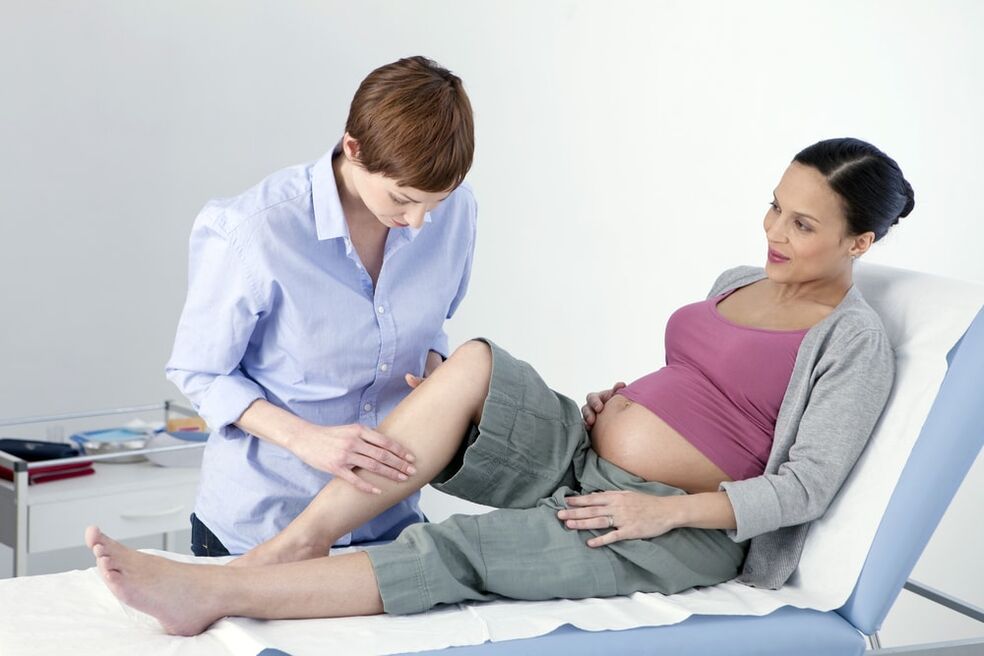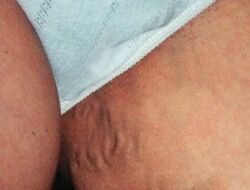
Varicose veins are an unsightly condition characterized by dilation of superficial veins, a network of which is visible through the skin.With this disease, blood circulation in these vessels is disrupted, resulting in insufficient oxygen supply and insufficient removal of carbon dioxide.The symptoms are more obvious and require prompt treatment.It is best to avoid this disease entirely through prevention.Usually, treatment for varicose veins requires surgery.
Why do varicose veins occur?The following reasons are often found in many people's lives:
- Metabolic disorders.
- Occupations where people are constantly standing (salespeople, waiters, etc.).
- Bad habits (smoking and drinking) can have a negative impact on the condition of your blood vessels.
- Endocrine diseases.
- Overuse of red pepper in food.
Causes of varicose veins
Doctors are increasingly reluctant to believe that varicose veins are a hereditary disease.But this is not always the case.Scientists note more other factors that often trigger the disease: lifestyle, hormonal levels and nutrition.
Impaired metabolism is one of the causes of varicose veins.It leads to obesity, a result of an inactive lifestyle and poor diet that is common today.People are increasingly consuming highly processed foods and abandoning plant-based foods.
In addition, occupations such as standing for long periods of time, sitting for long periods of time, carrying heavy objects, and sudden movements will put great pressure on the veins.Over time, all of these can lead to the development of varicose veins.
- Long-distance flights or transfers can affect venous conditions, which often manifest themselves in men.
- Women often develop groin varicose veins from wearing tight underwear.They can also develop varicose veins in their lower limbs if they often walk in high heels or shoes with uncomfortable soles.
Pregnancy can also be a factor in the development of varicose veins, especially if there is a history of rheumatoid arthritis or osteoporosis.
Other causes of varicose veins are:
- Deep vein thrombosis.
- Prostatic adenoma.
- cough.
- Persistent constipation.
- Anesthesia is used for surgery.
How to identify varicose veins?
The first sign of varicose veins is the appearance of a blue vein pattern (web-like) on the surface of the skin.It usually occurs on the thighs where cellulite is located - where fat metabolism is impaired, putting pressure on the veins.
The second symptom of varicose veins is swelling of the soft tissues of the legs.When diagnosing this disease, it needs to be differentiated from renal urolithiasis and cardiovascular system failure.
The more severe the varicose veins, the more intense the pain in the calf muscles.The pain is constant or severe, often worsening by lunchtime after a certain load during the day.
Someone complained:
- Legs are heavy.
- Nutritional changes in the leg area.
- Cramps at night.
On external inspection, a grid or stars can be seen, especially when the person is standing.If the patient is positioned recumbently, the external manifestations of varicose veins may become less apparent.Swelling usually subsides after resting overnight.
stages of varicose veins
Varicose veins are progressive and go through the following stages:
- The first are venous swelling, structural inhomogeneity, venous sclerosis, nodule formation and thrombophlebitis.
- The second is tiredness, irritability, weakness, and heavy legs.Worsening of health, insomnia, and memory loss.Complaints of nocturnal cramps occur.For a long time, after taking off the outer clothing, the skin will be swollen and unable to return to its original shape.
- The third is the nutritional changes in the calf area.The skin becomes brown, dry, cracked, and lifeless.Dermatitis with characteristic rash and itching occurs.The swelling can now be located anywhere in the leg.The feeling of heaviness is reminiscent of muscle swelling.Any stress can lead to rapid fatigue, which can lead to depression, insomnia, and weakness.
- The fourth stage is the development of complications such as inflammation of the vein wall, bleeding, or the appearance of trophic ulcers.

Varicose veins during pregnancy
If a woman is prone to varicose veins, or the first signs appear before pregnancy, then this disease will become fully apparent during pregnancy.Typically, 35% of women develop varicose veins during their first pregnancy, 50% during their second pregnancy, and 75% during their third pregnancy.
Varicose veins are caused by blood entering the lower limbs but having difficulty getting out.This causes blood to stagnate, causing the veins to dilate and become visible.If a woman does not receive treatment, she may be at risk of the blood clot becoming dislodged, resulting in the death of mother and baby.
Other causes of varicose veins during pregnancy include:
- Hormonal changes.
- The enlargement of the uterus and its pressure on blood vessels.
- Increased blood volume.
- personal characteristics.
Pathology may also occur in the anal or labial area.
pelvic varicose veins
Varicose veins don’t just appear in the legs; And in the pelvic area.This disease usually occurs in women.Using three-dimensional ultrasound for diagnosis, you can see dilated veins in the small pelvis, as well as inflammatory processes in the uterus, ovaries, and bladder.
And in the pelvic area.This disease usually occurs in women.Using three-dimensional ultrasound for diagnosis, you can see dilated veins in the small pelvis, as well as inflammatory processes in the uterus, ovaries, and bladder.
The symptoms of varicose veins in the pelvis are similar to those of varicose veins in the legs.Feeling of heaviness and pain in the lower abdomen.The causes are usually pregnancy, pelvic pathology, and difficult labor.Other factors include:
- Always hold the child in your arms.
- Sedentary lifestyle.
- Take oral contraceptive pills.
- Congenital venous wall dysplasia.
How are varicose veins treated?
Conservative treatment is allowed only when there are contraindications to surgery or when varicose veins are in their early stages and have not yet undergone pathological changes.What is used here is:
- bandage.
- Compression socks.
- Keep changing positions.
- Lift your legs so they can rest.
- Avoid places with high temperatures and poor ventilation.
- Eliminate large amounts of fluids and salt from your diet.
- Take diuretics.
- Vein protectants.
- NSAIDs.
- Exercise therapy for simple varicose veins: bathing, swimming, water aerobics.
- ointment.
- Leech therapy.
Varicose vein surgery
Tumescent anesthesia (using local anesthetic) is part of the surgical procedure.This measure must be taken if pathological changes have already begun.
A phlebectomy is a procedure that uses local anesthesia - a small puncture of a vein directly on the surface of the skin.
Another type of surgery uses short curettage to remove the affected vein.
Endoscopic vein dissection is another procedure that uses an endoscopic machine to identify the area of affected veins.
Prevention and prognosis of varicose veins
Varicose veins can be prevented or stopped from developing.For this purpose, preventive measures that lead to a good prognosis must be taken:
- Quit bad habits.
- Wear a compression garment.
- Massage legs, thighs and back.
- Exercise therapy.
- Relieve stress.
- Maintain personal foot hygiene.
- Eliminate constipation.
The most effective way is to change your daily habits.You should eliminate high-intensity physical activity and get enough rest.You can also turn to traditional medicine recipes.


















